Dec 19, 2025
Dec 19, 2025
Sacred Rivers in India
Continued from Part LXIII
In common parlance, nearly all religions in the world talk about the superiority of human beings and some sort of their stewardship over God's all creation, including protection and maintenance of all animal and plant life, which is material and valuable in any way. However, an overwhelming majority of the followers of two dominant Abrahamic religions also feel that the God has given faithful humans full right to use other animals and plants for own survival and ease of living. Therefore, they often claim it as their right which also explains why an overwhelming majority of such people kill various animals for own consumption. As against this, Hindu scriptures teach that every living being has a soul which is nothing but an extension of God, also the reason why number of flesh eaters are less among Hindus and they respect all useful creation and revere them with gratitude. This reverence is not limited to only useful animals and plants but extended even to all other forces/creation in nature including inanimate objects like Sun, Moon, Rivers/Ocean, some of which are even deified and worshipped.
Due to aforesaid reason, many rivers have been personified as goddesses in Hindu theology and are worshipped since Vedic times. Water has added significance and is often synonymized with life. On an average, about sixty percent or more human body comprises of the water component and it’s daily continued uptake in adequate quantity is essential for the proper maintenance of the body and sustenance of many vital activities. Traditionally, all major civilizations and human settlements have grown around the rivers and other water bodies since ancient times. The significance of rivers was understood and acknowledge by our rishis and scholars since Vedic age and the tradition has continued till date. Although many local rivers, streams and stagnant water bodies are recognized for religious and social purposes by Hindus, the eight sacred rivers, namely Ganga, Yamuna, Sarasvati, Sindhu, Narmada, Godavari, Kaveri and Brahmaputra are widely recognized and worshipped by people in India, with several mythical tales attached linking these rivers with the manifested gods and goddesses.
Scope and Worth of Riverine Systems
All the aforesaid major rivers have umpteen tributaries and associated floodplains, marshes, lakes and billabongs, mostly comprised of freshwater, which inter alia also provide breeding and feeding habitats for many animals and plants, such as waterbirds, fish and reeds. Thus, apart from their cultural and religious significance, they are also important from the point of view of the geology, hydrology, inhabitation in the surrounding areas and consequent economic activities including tourism and pastoral activities. The water of these rivers is tapped by constructing dams and barrages on them as also digging canals for the irrigation, power generation, drinking water supply, and so on. For instance, the Ganga and it’s tributaries, particularly the Yamuna, have been used for irrigation since ancient times and the available evidences suggest that dams and canals were prevalent in the gangetic plain as back as the fourth century BCE.
Besides, nearly all rivers are also significant from the angle of ecology, environment and animal life. During the recent decades with the population pressure and growing need of grains and other food produce, the erstwhile ecology and environment around the rivers have considerably degraded, which is causing concerns due to destruction of the natural vegetation and wild life for the agricultural land. following indiscriminate human activities, particularly in the upper gangetic plain. Since the time immemorial, these waters have also sheltered and sustained water life mainly fish, crabs, turtles, crocodiles, birds, as also dolphins in Ganga water. Further, some of these rivers also pose threat and implications of floods, pollution and other environmental hazards. However, the author proposes to restrict the scope of the present piece only in the context of the cultural and religious value and significance of the eight sacred rivers.
Sacred Rivers
1. River Ganga
Ganga has been the cradle of human civilization since the time immemorial. It is one of the most sacred rivers in the world and is deeply revered by Hindus of this country and elsewhere. To a majority Hindu population at philosophical level, Ganga is not only a lifeline river and a purifier of the mortal beings but also a living holy Goddess, the Mother Ganga. Many people have an immense faith in the healing and regeneration powers of the Ganga and for many of them, it remains a life time ambition to take a holy bath in this river, particularly during periodical Kumbh Mela. Besides, the river serves as a lifeline to millions of Indians who live along its course and depend on it for their various needs.
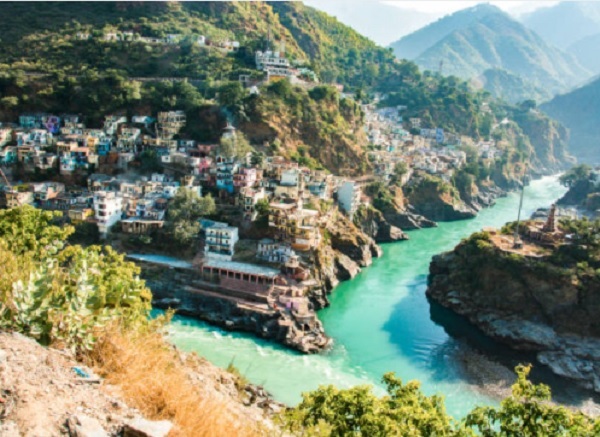
In India, this is the most sacred river out of the aforesaid seven and most people believe that one who takes a bath in this river is absolved of all sins. The river originates at the Gomukh, Gangotri glacier in the state of Uttarakhand at the approximate height of about 4000 metres in Himalayas and terminates at the Ganga Sagar in the Bay of Bengal on the eastern coast. Actually, the Ganga begins at the confluence of two mountain rivers namely Bhagirathi and Alaknanda at a place called Devprayag; of this, Bhagirathi is considered to be true source of Ganga in Hindu culture and religion. In its total length of approximately 2550 km, it traverses through the states of Uttarakhand (about 450 Km), Uttar Pradesh (about 1000 Km), Bihar (about 405 Km), Jharkhand (about 40 Km) and West Bengal (about 520 Km). During its course, in another stretch of about 110 Km the river serves as the state boundary between the Uttar Pradesh and Bihar.
The river has traditionally been considered as divine entity and worshipped by devout Hindus as goddess Ganga. From the ancient times, the Ganga was considered a holy river and there are several mythical events and legendary tales attached with its descent (Avatarana) or origin on earth. Its vastness and influence could be realized through its total catchment area, which works out to approximately 8,61,400 square km i.e., over 26% of the total geographical area of India. According to a popular legend in Ramayana, Mahabharata and some Puranas, the Rishi Kapila was on intense meditation in ancient times, which was interrupted and spoiled by sixty thousand progeny of the King Sagara of Ikshvaku dynasty. Enraged at their uncivilized behaviour, Kapila burnt them to ashes with his curse and dumped them all to the netherworld. It transpired that only the holy waters of the Ganga, then in heavenly abode, could bring the dead to their salvation.
King Bhagiratha, a descendant of this dynasty, resolved to bring salvation to his ancestors. So, he undertook rigorous penance and was eventually granted by Gods his wish of Ganga's descent from the heaven. As Ganga was originally very turbulent and her descent would have caused turmoil on the earth, Bhagiratha had to persuade Lord Shiva at Mount Kailash to receive Ganga in the coils of his tangled hair so as to moderate her fall. Consequently, Ganga descended duly tamed in Shiva's locks to arrive in the high Himalayas. Bhagiratha then led Ganga down the plains through Haridwar, Prayagraj, Varanasi and eventually down to Ganga Sagar to salvage king’s ancestors. In honour of Bhagiratha’s key role in Ganga Avatarana, the source stream of the Ganga in the Himalayas was named Bhagirathi.
Because Ganga is widely believed to have descended from the heaven to earth, she is also considered the vehicle of ascent, from the earth to heaven. Accordingly, many Hindus prefer to cremate their dead on the banks of the Ganges with the belief of their instant salvation. If the death and cremation have occurred elsewhere, close relatives take ashes of the dead for immersion in the River Ganga to holy places like Haridwar, Prayagraj and Varanasi to achieve same bliss. Hindus consider the waters of the Ganga to be both sacred and purifying, which is why it is retained in homes as Gangajal and used for various rites, including the dying person is made to drink it while breathing last. An important event associated with River Ganga is the Kumbh Mela, the place for a mass pilgrimage in which Hindus gather at the banks of river to take holy dip on auspicious occasions. The Ardh (half) Kumbh is celebrated every six years at Prayagraj and Haridwar and the Purna (complete) Kumbh every twelve years. These events need long preparation and massive arrangements with millions of pilgrims taking holy bath at opportune time.
In another mythical tale of the Vaishnava version about the origin of Ganga, it originally exists as heavenly waters in a rivulet known as the Vishnupadi (The Sanskrit meaning of which is one arising from the foot of Vishnu). According to this version, when Lord Vishnu in Vamana avatar took his celebrated three strides over the three lokas, he also released through a punch of his toe Vishnupadi, which until then was circling around the cosmic egg. Thus, she plummeted down to Indra’s heaven where she was received by Dhruva, a steadfast devotee of Vishnu. Then streaming across the sky through the milky way, she came to moon, and from it she flowed down earthwards to Brahma’s realm atop Mount Meru. From this point, the divine waters took shape of a stream, known as Bhagirathi, flowing down into Bharatvarsha as the holy River Ganga.
Although so many places along the course of Ganga are considered pious by Hindus, but Varanasi is longed most at the time of death. It is common belief among Hindus that who die in Varanasi and are cremated at the banks of the Ganga, become entitles to instant salvation. In Hindu spirituality, the Ganga is visualized mother, shakti and consort of all the three major male deities (Brahma, Vishnu and Shiva). The Hindu devotees remember her as the mother goddess, she is also symbol of shakti - the moving, restless, and rolling energy – for which the otherwise recluse and detached Shiva appears on earth. The Hindu god of war Skanda has addressed the sage Agastya in the Kashi Khand of the Skanda Purana as follows:
One should not be amazed ... that this Ganga is really Power, for is she not the Supreme Shakti of the Eternal Shiva, taken in the form of water? This Ganga, filled with the sweet wine of compassion, was sent out for the salvation of the world by Shiva, the Lord of the Lords. Good people should not think this Triple-Pathed River to be like the thousand other earthly rivers, filled with water.
As consort of major deities, she is Brahma’s associate, and always travels with him in the form of water in his kamandalu; she is Vishnu’s consort as Vishnupadi, who emanates from his foot in his heavenly abode; and Shiva as Gangadhara bears the descent of the Ganga and their relationship is considered both intimate and perpetual.
The River Ganga has a large number of tributaries too, such as Alaknanda, Ramganga, Kali, Yamuna, Gomti, Ghagra, Gandak, Kosi and Sone, together draining about eleven states of the country to join the holy river at different confluence points during its course. With the passage of time, the total population and population density has increased many folds in the plains of Ganga basin, giving rise to pollution as the major cause of concern across the length and breadth of the mighty river. The chief sources of pollution are direct sewage disposal from cities and towns situated at the bank of the river, industrial waste from factories, disposal of mortal remains of dead bodies and religious offerings mostly wrapped in non-degradable polythene bags. In 2014, the Government of India launched an ambitious “Namami Gange Programme” with 100% central assistance, which has led to considerable improvement but this integrated Ganga conservation and cleaning programme has to go a long way for sustainable Improvement of such a mighty river.
2. River Yamuna
The Yamuna River is the main tributary of the River Ganga and the two together along with the mythical Sarasvati constitute the holy pilgrimage place in the Triveni Sangam at Prayagraj, Uttar Pradesh. In Hindu culture, this river has a special place and finds references even in the Vedic literature. The name Yamuna appears to have been derived from the Sanskrit term “Yama”, meaning ‘twin’ that may be due to the fact the river nearly runs parallel to the mighty Ganga. She is also linked to Yami as goddess, who was the twin sister of Yama, the god of death, in Hindu Mythology, and both were the offspring of the Sun-god Surya and his wife Saranyu. Its origin point is the Yamunotri Glacier at a height of over six thousand metres on the southwestern slopes of Banderpooch peaks of the Lower Himalaya in Uttarakhand, while according to a legend the original source of the river is a glacial lake in the name of Saptarishi Kund, where a temple dedicated to the goddess Yami (Yamuna) is also located. Historically, Yamuna finds mention at many places in the oldest Hindu scripture the Rig Veda, and also in many later texts.
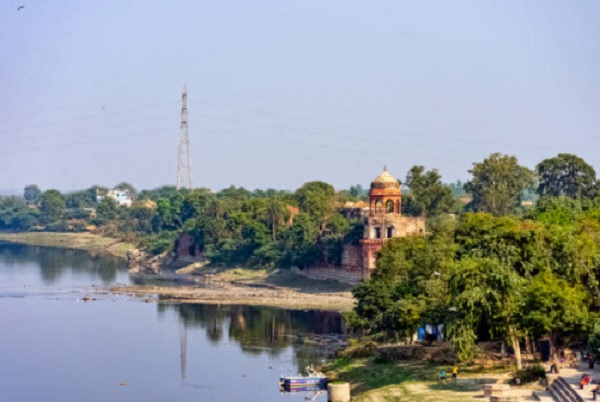
The river is the longest tributary in India with a total length of about 1,375 kilometres with the drainage system of approximately 366,225 square kilometres i.e., about fourty percent of the entire Ganga Basin. It merges with the Ganga at Triveni Sangam, Prayagraj, a much-celebrated site of the famous Kumbh Mela, referred to in an earlier paragraph. In its course, the Yamuna crosses the Indian states of Uttarakhand, Himachal Pradesh, Haryana, Delhi, Uttar Pradesh meeting and merging with its own important tributaries of Tons, Chambal, Hindon, Betwa and Ken besides many other smaller rivulets. During its course, along with the mighty Ganga it creates highly fertile alluvial Yamuna-Ganga Doab region in the Indo-Gangetic plain.
As the holy river is religiously linked to Yama, the god of death, Hindus take bath in the river with the belief that it will relieve them from the fear of death. While in ancient Hindu texts, the Ganga is often depicted as an epitome of ascetism, purity and knowledge leading to liberation, the Yamuna is depicted as symbol of infinite love, compassion and freedom from the fear of death. Some of the great empires of the ancient India such as Magadha, Maurya and Shunga empires before the Christian era and Kushan and Gupta in the early first millennium CE were centred and had largely prospered in the fertile Ganga-Yamuna basin, Accordingly, both the rivers Ganga and Yamuna were revered throughout these kingdoms. The personified glory of these rivers as goddesses is depicted in the sculptural art of these dynasties as also in some architectural motifs, more particularly from the period of Chandragupta II (378-415 CE). The Three River Goddess shrine, depicting the Ganga flanked by the Yamuna and Sarasvati is located at Ellora near the famous Kailash rock-cut Temple.
The river Yamuna is intimately linked to the legends of Shree Krishna and his Leela while he was still young. One such legend is about an incident when child Krishna stole the garments of bathing gopis in Vrindavan and hid them on the branches of a Kadamba tree at the banks of Yamuna to teach the them a lesson so that they should avoid bathing nude in public places. Yet another legend relates to tale of taming Kaliya Nag (serpent) who inhabited the river and constantly troubled and terrorised the people of Braja. These episodes are portrayed in many ancient and contemporary arts, paintings and artifacts in Hindu households, temples and religious places. Yamuna as Kalindi is also considered as a consort of Krishna. This tale is epitomized by the 16th century philosopher and poet Vallabhacharya in his Sanskrit hymn, Yamunashtakam, which is a narrative of her descent to meet her loved Krishna and to spread the message of subtle love and compassion in the world. The same text also refers to her water being of the dark (Shyam) colour commensurate with her love Shree Krishna. Vallabhacharya had also propagated the Pushti Marga, sect in Hinduism based on Shuddh Advaita, wherein Shree Krishna is the chief deity and Yamuna as Kalindi his consort.
3. River Sarasvati
The River Sarasvati is also spelled as Saraswati but in the present age it has no visible or physical existence. The devout Hindus believe its existence under the land surface and such places too vary but wherever it exists in belief of people, they invariably treat it a holy place. In Rig Veda, as also the later Vedic and post-Vedic texts, Sarasvati is deified and finds mention at several places that suggests that it had played a significant role in Vedic culture and religion. As a physical river, she finds mention as a great and holy river in the Vedic texts, while in the later post-Vedic ancient literature she is mentioned as a small river merging into the Samudra (arguably a terminal lake). The most common reference of the River Sarasvati appears as a metaphysical entity, whereby it forms a confluence with two other most sacred rivers, Ganga and Yamuna, at the Triveni Sangam, Prayagraj.
The Saraswati river gains more significance for the Hindus from the civilizational and cultural angles because it is believed that it was at the banks of River Sarasvati and it’s tributary Drishadwati, where the first Vedic state namely Brahmavarta came in existence. Also, it was at the banks of Sarasvati where the ancient rishis and seers had created the Vedic scriptures such as Vedas and early Upanishads. It may be recalled that the Western scholars and Indologists have simply linked the origin of the Hindu civilization with the Indus Valley Civilization curtailing the total civilizational history to just 35-40 centuries while the traditional Hindu history as recorded in Puranas and Epics supported with epigraphic and other credible evidences reckon Vedic period even before 10,500 BCE. According to them, the ancient Indian history begins with Brahma, the founder of the Vedic culture and contemporary science, and his son Svayuambhuva Manu, the first king of the Brahmavarta kingdom.
Although in Vedic and other early texts, Sarasvati finds a mention as holy river but in some Brahmanas she is also described as Vagdevi, the goddess of speech. However, in later historical texts such as Puranas and Epics, she is rarely associated with a water stream; instead, she is more depicted as the goddess of knowledge, wisdom, learning, music, arts and so on. In Mahabharata, the Sarasvati River is mentioned to have dried up to a desert land with a location in the Kuru Kingdom. According to some modern age scholars, the dried up and seasonal Ghaggar River in the present Rajasthan and Haryana states concord with the same locale as described in the Mahabharata. According to a legend, Balrama, Shree Krishna’s elder brother, made a journey from Dwarka to Mathura along the banks of Sarasvati. Apart from Sarasvati as goddess/consort of Brahma, she also finds a mention in some Puranas as holy water in the latter’s Kamandalu. According to Padma Purana, those who take bath and drink water at the confluence point of the Ganga, Yamuna and Sarasvati are granted instant liberation.
Due to invisible status, varied descriptions and associated mythical tales, River Sarasvati has remained a mystery and topic of curiosity equally for the scholars of philosophy and scientists. Consequently, a lot of research and analysis have been jointly made by the scholars of the IIT Kanpur and Imperial College, London. According to their findings, the Vedic Sarasvati was a well-developed river system with seven main tributaries. The Panchavimsa Brahmana provided that the Sarasvati was lost at the place called Vinasana, the ultimate location of which is traced in Kurushetra. The post-Vedic Sarasvati and Drisadvati Rivers are said to have survived up to the Mahabharata era (3162 BCE) and ultimately dried up around 3000 – 2600 BCE.
4. River Sindhu
The Sindhu River, now more commonly known as Indus River, is one of the longest rivers in the Indian sub-continent, only next to Brahmaputra River in total length. This was part of the erstwhile Akhand Bharatvarsha with significant civilizational and cultural value but now it mostly flows through Pakistan. The river has its origin in the Western Tibet, it flows northwest-ward through the Ladakh and Gilgit-Baltistan regions of Pakistan-occupied-Kashmir, then takes a sharp left turn towards the Nanga Parbat massif, then south-by-southwest into Pakistan before merging into the Arabian Sea near Karachi. The river has an estimated length of 3,280 km with Jhelum, Chenab, Ravi, Beas and Satluj as main tributaries. The Indus River basin has a catchment area of about 1,165,000 square km, of which only about 321,290 is in the northern states of India.
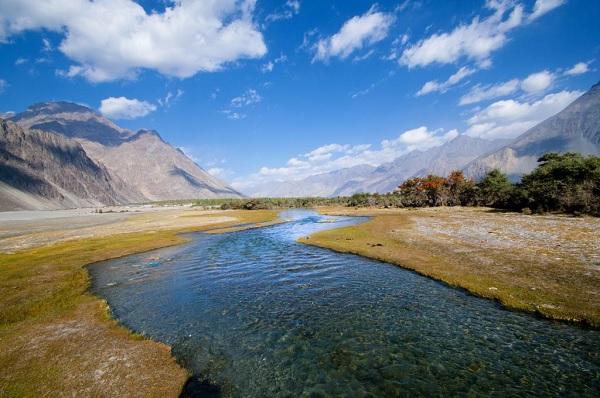
Sindhu is one of the most important rivers since the Vedic age in India, the term is said to find mention in the Rig Veda over two hundred times and most often in the context of a river of same name. The common belief is that the term Hindu has been derived from the Sanskrit word Sindhu. The modern age term “India” for Bharatvarsha too appears to have been derived from the term “Indus”, the current popular name of Sindhu River. Thus, the river has a significant value to Hindus from the civilizational and cultural point of view. However, as the river now mostly flows in Pakistan through occupied/disputed Indian territories, Hindus have increasingly lost their access and interest in this historical river in the post-independence period.
The river is also significant for its civilizational value as the famous Indus Valley Civilization, also known as Indus or Harappan Civilization, had evolved and prospered in the alluvial plains of the Indus River System in ancient age. The excavations carried out under the aegis of the Archaeological Survey of India in the twentieth century suggest the existence of a fairly well evolved civilizaion of the Bronze Age from 3,300 BCE to 1,300 BCE. The aforesaid civilization is believed to have extended from Pakistan's Balochistan in the west to Western Uttar Pradesh of India in the east, and from northeastern Afghanistan in the north to Gujarat, India in the south.
5. River Narmada
The Narmada River, also known as Narbada or Reva, is listed as the fifth longest as also the longest west flowing river in India. Its origin point is Amarkantak in the Anuppur district of Madhya Pradesh and it flows through the states of Madhya Pradesh and Gujarat often dubbed as the “lifeline” of these states. While defining a conventional and natural boundary between the north and south India more or less parallel to Vindhyan range, it runs westwards for an estimated length of 1312 km and merges into the Arabian Sea, about 30 km west of Bharuch in Gujarat. Other than Narmada which flows into the rift valley bordered by Vindhya and Satpura ranges, only two other rivers namely Tapti and Mahi run from east to west in the peninsular India.
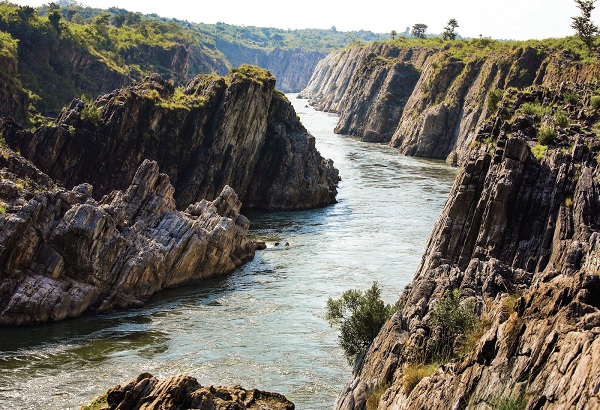
Hindus, particularly those living across the course of river, revere and worship it like a goddess. Several mythical tales are associated with its origin and other attributes. According to a legend, once the God Shiva meditated so hard that he soon started heavily perspiring. This sweet accumulated in a tank which overflowed turning into a stream, which was then given the holy name Narmada. The river finds many references in the Ramayana, Mahabharata and some Puranas. For instance, the Reva Khands of Skanda Purana and Vayu Purana exclusively deal with the origin and significant attributes of this river. According to a popular Hindu belief, the holy bath in this river has same values as a bath in Ganga, and can cleanse all sins of the devotee. Its value can be fathomed from yet another legend, according to which the Narmada waters are so pious and clean that the Ganga herself assumes the form of a black cow and visits to the Narmada to cleanse herself in its holy waters on certain auspicious occasion in a year. This mythical fable was narrated to this author by a priest at the Narmada ghat during his Jabalpur abode.
More important religious places and Ghats at the banks of Narmada River all along its course are its origin point known as Narmadakund at Amarkantak, Omkareshwar Temple at Khandwa District, several Mahadeva (Shiva) temples at Maheshwar, Siddheshwar Temple at Nemawar in Dewas District, Chausath Yogini Temple, Bhedaghat at Jabalpur, Chaubis Avatar Temple, Omkareshwar, Bhojeshwar Temple, Bhojpur in Raisen district and Bhrigu Rishi Temple in Bharuch. The religious importance and Hindu faith in this holy river is also exemplified from holy pilgrimage (Narmada Parikrama) undertaken by the devotees and ascetics that begins on foot at Arabian Sea, Bharuch in Gujarat to the origin point at Amarkantak, and back along the opposite bank of the river. The pilgrimage involves a total journey of about 2,600 km on foot and usually completed in three years, three months and thirteen days.
6. River Godavari
Among the rivers that have origin and termination points in Indian territory, the Godavari River is the second longest river after Ganga that flows eastwards. Its origin point is Triambakeshwar, Maharashtra, covering a distance of about 1,465 km through the states of Maharashtra, Telangana, Andhra Pradesh, Chhattisgarh and Odisha. In its eastward sojourn, it traverses nearly half of its length through the state of Maharashtra and the remaining half in other aforesaid states before emptying in the Bay of Bengal at the Odisha coast. It has an extensive network of tributaries, of which the Pravara, Manjira and Maner are the main right bank tributaries and the Purna, Pranhita, Indravathi and Sabari are important left bank tributaries. With an area of about 312,800 square km, Godavari constitutes one of the largest river basins in India.
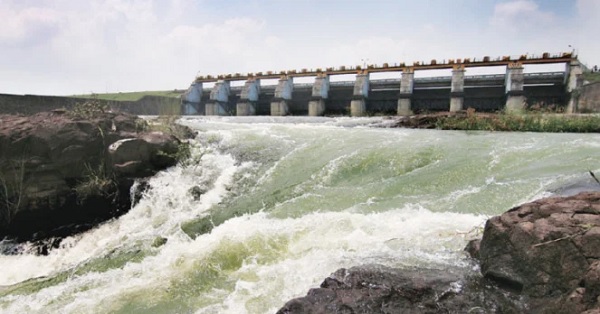
River Godavari is the holiest river of the peninsular India and people often remember it as the Dakshin Ganga (Ganga of the South). On the pattern of Prayagraj and Haridwar, the Kumbh Mela festival is periodically organized at Nashik, Maharashtra, which is a significant pilgrimage place in India with common belief that a holy bath in the River Godavari absolves the person of his previous sins. Along its banks, it has many places of pilgrimage in the concerned states. Another famous festival the Maha Pushkaram is celebrated in Telangana and Andhra Pradesh, where the devotees take holy dip in the Godavari River with the belief that the act will empower them with better physical and mental abilities, apart from the supposed riddance of sins. The last such festival was organized in July 2015; the Maha Pushkaram festival occurs after every 144 years as twelfth recurrence of the twelve-year Pushkaram cycle.
An interesting mythical legend is associated with the origin of the Godavari River. According to this legend, the sage Gautam and his wife Ahalya lived at the Brahmagiri Hills at Tryambakeshwar. They used to cultivate rice and other crops in the Ashram itself for their use. At the behest of other rishis, once the god Ganesha despatched a magical cow Maaya-dhenu, which started spoiling the rice crop at the Ashram. As Hindus always treated cow with humility, Gautama offered the dharbha grass to the cow in lieu of rice. However, Maaya-dhenu fell drop dead after eating the grass and other saints and ascetics in the area started blaming Gautama with gau-hatya (bovicide). As Rishi Gautama was a righteous man, he wished to atone for the cow’s death in consultation with other sages and started observing Tapas (atonement) to the Lord Tryambakeshwara (manifestation of Shiva) with the wish to make the Ganga flow over the cow. Shiva was ultimately pleased and diverted the holy Ganga that washed away the corpse of the dead cow and the water stream thus formed was known as Godavari.
7. River Kaveri
The Kaveri River, also known as Cauvery, is yet another sacred river in the peninsular India down south. The river flows through the southern states of Karnataka and Tamil Nadu. It originates at Talakaveri in the Brahmagiri range of the Western Ghats, in the Kodagu district of the state of Karnataka and covers a distance of nearly 800 km eastward before emptying in the Bay of Bengal at Poompuhar in the coastal district of Mayiladuthurai in Tamil Nadu. The river has several tributaries and the important ones are Harangi, Hemavati, Kabini, Bhavani, Lakshmana Tirtha, Noyyal and Arkavati. Together with its tributaries, the Kaveri River system has a catchment area of about 81,155 square km, bulk of which is in the two aforesaid states with small parts in Kerala and Puduchrry.
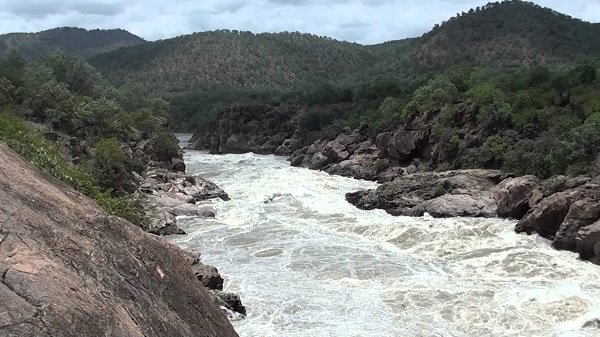
While traversing through the largest state in South India, it nearly bisects Tamil Nadu into North and South and has a famous Shivasamudram falls located on it in Karnataka, where the country’s first hydro-electric plant was established 1902 during the colonial era. The people of South India treat Kaveri as a scared river and worship it as the Goddess Kaveri Amman. The course of river is worth illustration as it forms two islands in Mandya district's Srirangapatna and Shivanasamudra. The former place forms the Sangam of South while the latter is characterized with the drop of river by about 98 metres forming the famous Shivanasamudra Falls, where the water was tamed to construct the aforesaid hydropower plant.
The South Indian people hold the river in high esteem, personified as the goddess Kaveri Amman. According to a legend, Vishnumaya (Lopamudra) was the daughter of Kavera Muni and was married to Sage Agasthaya (Agastya in North India). Later, she was transformed into the River Kaveri for the welfare of the mankind. On the pattern of the Godavari Pushkaram, people observe the Kaveri Pushkaram too at Mayiladuthurai in Nagapattinam district in Tamil Nadu every twelve years. The town is famous for the Mayuranathaswami Temple, which is a prominent Shaivite temple. The last such Maha Pushkaram was celebrated in September 2017; the festive event is characterized with the millions of devotees taking holy dip in the river, worshipping their favourite deities in temples and organise cultural activities such as the traditional dance, music, spiritual discourses, and so on. The ancient temple town Talakad too is located on the Kaveri River, where the holy festival Panchalinga Darshana is held every 12 years.
8. River Brahmaputra
The Brahmaputra is the longest river flowing from the Mount Kailash in Himalayas to the Bay of Bengal through Tibet, India and Bangladesh with different names in different territories covering a distance of about 3848 km (length vary in different accounts). The average depth of the river is about 30 metre and is ideally suited for the irrigation and transportation in the region. In the ganga delta, it merges with Padma (ganga) and is called Meghna before merging with the sea. The literal meaning of the Sanskrit term Brahmaputra is the “son of Brahma” and thus it is the only river that carries a male name, possibly due to its length and vastness. Also, the river has shifted and changed its course many times in the past few centuries. Among its numerous tributaries, the major ones are Jiadhal, Subansiri, Siang, Kameng, Dhansiri, Manas, Champamati, Noa Dehing, Buridehing, Debang, Dhansiri, Kopili, Digaru, Dudhnai and Krishnai.
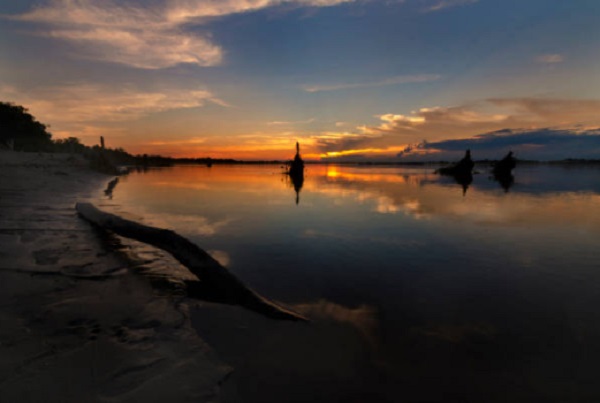
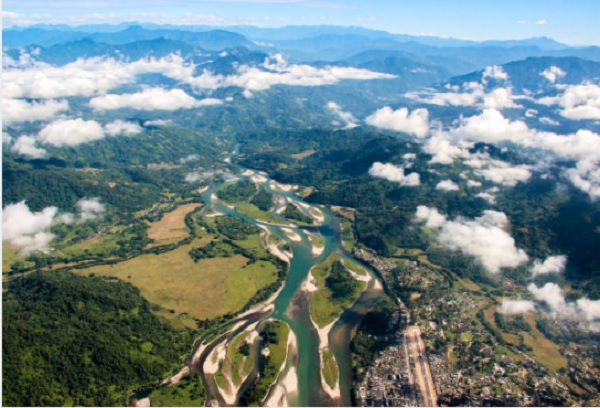
View of Brahmaputra from the air
According to an ancient legend, the Sage Shantanu and his wife Amogha had a child with the blessings of Lord Brahma, who took the form of water. Now placed in the middle of the four great mountains - Kailash, Gandhamadana, Jarudhi, and Sambwartakka, he grew into a great lake, the Brahmakund. The legendary Parashuram had committed the grave sin of killing own mother with an axe under the instructions of his father and, consequently, the axe got permanently stuck up in his hand. At the advice of wise sages, he atoned by visiting several holy places. When he took holy bath in Brahmakund and at the locals’ request, he axed down one side of the mountain releasing water from the lake into a stream, the blood from the axe washed up giving the water a reddish tinge; hence the name of the river “Luit” (= Blood) in Assamese. People in some places worship the river and take holy bath in it.
Postlude
The importance of water in human life was acknowledged by the ancient Hindu rishis and seers. Consequently, rivers and other water streams have been acknowledged by Hindus with gratitude and many of them have even been deified. Apart from the aforesaid seven sacred rivers, there are numerous other rivers, lakes and water bodies which too are worshipped and acknowledged by Hindus with a sense of gratitude. Few such examples are Sarayu, Kshipra, Pampa and Krishna rivers, and Pushkar lake. The value of Kshipra River could be understood from the fact that the holy city of Ujjain, the seat of Mahakaleswar (Shiva) – one of the twelve most sacred Jyotirlingas, is located at the right bank of this river. The Pampa River is located in Kerala near the famous Sabarimala Temple of Lord Ayyappa. The River Krishna is one of the four major rivers of South India, named after Shree Krishna and famous for Krishna Pushkaram and many pilgrimage places at its bank. The Sarayu River (River Ghaghra) derives its holy status by virtue of the city of Ayodhya, the birth place and capital of Sri Ramchandra, being located at its bank.
The tradition of personifying inanimate objects of the God’s creation is not unique to Hinduism alone; in fact, the other ancient civilizations such as Greek, Roman, Egyptian, etc., too followed this tradition until they were lost in due course with the onslaught of the two neo-Abrahamic religions in the post-Christ era. Traditionally, this was a way of human beings expressing their gratitude towards various animate and inanimate objects of God’s creation serving the cause of mankind. It appears quite logical and rational to acknowledge any service or act of kindness received. The myths and fables with supernatural element attached with these objects indeed adds up spice and makes the narrative more interesting and appealing to the common people. But again, this is not prevalent in Hinduism alone but has been common in the literature of all extinct and extant civilizations so much so that even the much later evolved dogmatic and dominant religions of the world are not free from these elements.
Images (c) istock.com
27-Jun-2021
More by : Dr. Jaipal Singh

|
Dear Bhupinder Singh Ji and RK Ji, I thank you for your response. The reason why Indus Valley Civilization had not been prominently mentioned were two fold: 1) Many Western scholars and Indologists try to see the glory of Indian civilization through a narrow lens of the aforesaid civilization based on mainly archaeological findings while Indian Chronology is much older and multi-facet; 2) focus of this article was on chief/sacred rivers. Nonetheless, I have briefly incorporated it now. Thanks |

|
River Sindhu is prominently mentioned in the article. Sindhu Ghati ki Sabhyata = Indus Valley Civilization. |

|
The Indus River (Which is now in Pakistan), where the Indus Valley Civilization furnished needs to find its mention in this write up. |